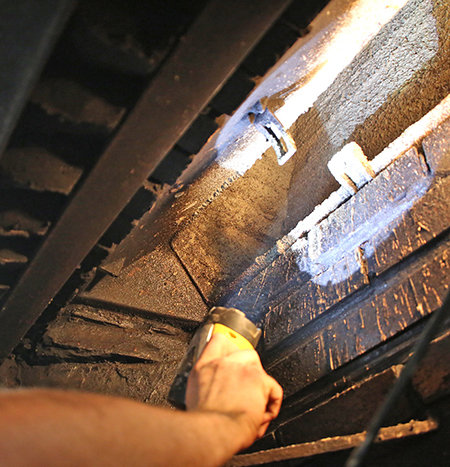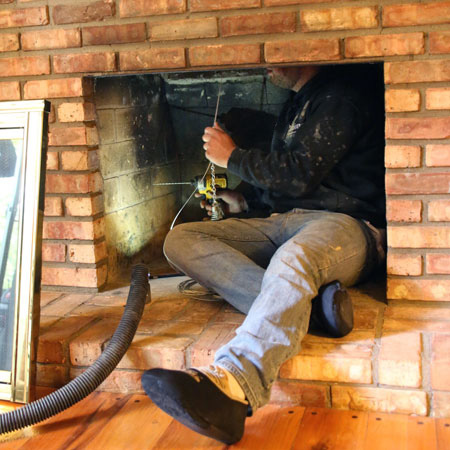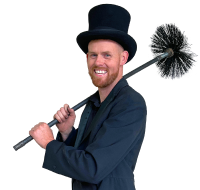Function And Importance of a Chimney Damper
When you think about your fireplace, the first thing you think of isn’t the chimney, it’s even less likely that you think about the damper in your chimney, but it is a vital part of the proper operation of your chimney. Usually, a damper is set right above your fireplace’s firebox, or it could be located at the top of the chimney. Dampers are straightforward in their construction and use. They have such parts as moveable plates, clamps, and a device that allows them to open and shut. Why is that important? Read the explanation below.
 What Does a Chimney Damper Do?
What Does a Chimney Damper Do?
One of the main functions of a damper is to manipulate how much or little the fire in your fireplace burns; this is done by controlling the amount of air coming into the fireplace. The dampers inside your chimney shut its throat when there isn’t a fire and open when there is a fire. The dampers should be closed when the fire isn’t burning because warm air will escape outside while letting cold air inside.
As a fire burns in your fireplace, the damper needs to be open. When a fire burns, the fire and smoke create harmful substances that must leave your home. When the dampers are open, smoke will be drawn up and out of your chimney, keeping toxic fumes from floating through your house. Another reason your fireplace’s damper should be open is to allow enough oxygen for a safe and efficient fire to burn. You need airflow through the damper to feed the fire to get adequate oxygen. If the airflow is too strong, it may cause your living room to fill with smoke.
As you can see, dampers play a vital role in the efficiency and safety of your fireplace.
Dampers serve another important purpose; they prevent wildlife such as birds, bats, and mice from finding their way into your home. If your chimney’s damper is located at the top, it also prevents animals such as raccoons and squirrels from making a home inside.
Dampers also keep the weather elements from getting into your fireplace. Without a damper, your firebox would routinely fill with rainwater or snow.
 How Can a Damper Get Damaged?
How Can a Damper Get Damaged?
You can probably guess the two main reasons dampers malfunction- rust and warping. The rust occurs from leaks in the structure of your chimney, such as cracked bricks, and a damper can warp after years of exposure to heat from fires and the sun.
If you aren’t having your chimney inspected regularly, you probably wouldn’t know about any damage to its damper; it’s a wise decision to have your fireplace and chimney inspected annually. We can detect damaged dampers and other issues in their early stages before they become expensive problems. Even before an inspection, you can see signs of damage:
- Loud creaks when opening and closing your damper.
- A strong draft of unknown origin in your house.
- Smoke backing up into your home while using the fireplace.
- Water or debris in your firebox.
- Animals or their droppings inside your house.
Call Hudson Valley Chimney immediately if you notice any of these signs.
Let Hudson Valley Chimney Inspect and Repair Your Chimney’s Damper
Don’t put off having your chimney’s damper and the rest of its components inspected. We can quickly determine the issue with your damper once we have examined it and will repair or replace the damper as required. Call us today to set up an inspection or fill out our simple contact form. One of our chimney experts will be happy to discuss your damper and set a time when we can come out and inspect it. Don’t let your damper become a problem; get in touch now.





